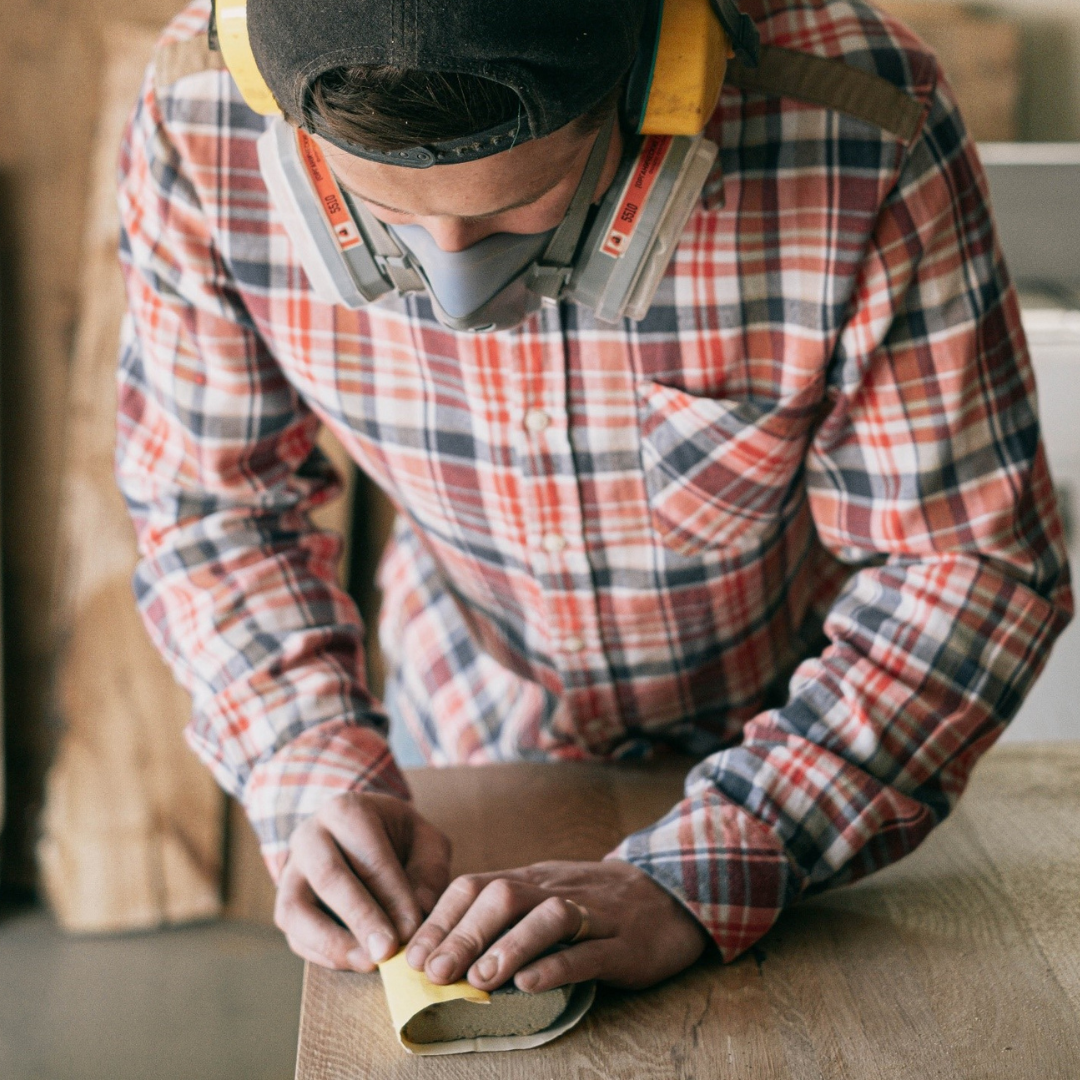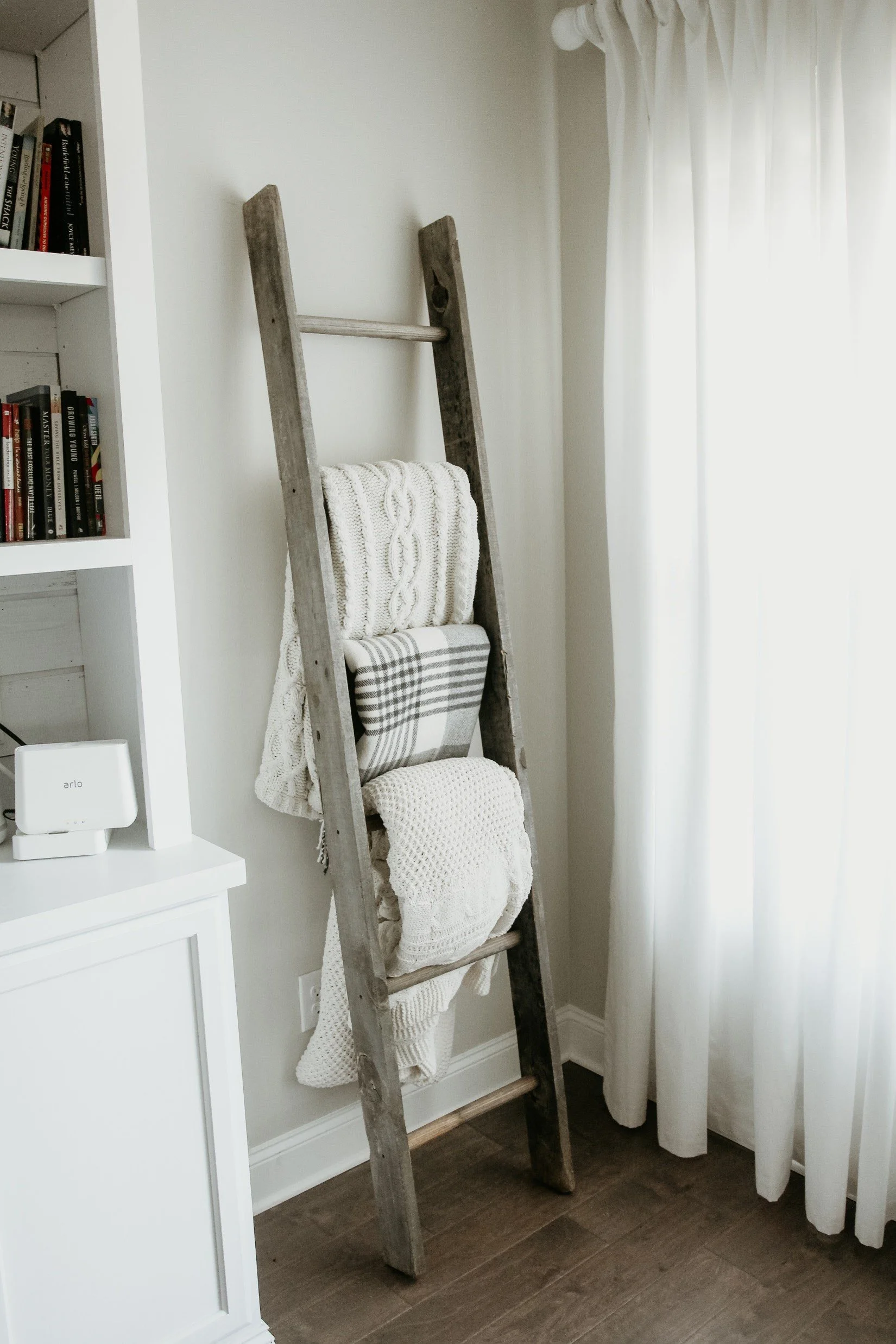Furniture is an essential part of any home. But sometimes the room's dimensions or the presence of architectural features can make it difficult to choose the ideal piece to complement the space.
Today I’ll show you how you can easily repurpose furniture, and other items, creatively to make it work in awkward areas, and some important things to consider before repurposing things for tricky spaces.
Measure your space
This is an important step before repurposing furniture because it will give you a clear idea of how much room you have to work with.
Meruyert Gonullu
To get accurate measurements, you can use a tape measure or laser measuring tool to determine the length, width, and height of the room. It's important to measure not only the main area where you want to place the furniture but also any smaller spaces, like alcoves or corners, that can impact its placement.
When you have your measurements, use them to determine the size of the piece you want to repurpose.
furniture fits comfortably
You'll want to make sure that the furniture fits comfortably in the space and doesn't block doorways or walkways. You'll also want to consider any architectural features in the room that could impact furniture placement, like wall access panels, built-in storage, or HVAC systems.
By measuring the space and considering these things, you’ll ensure the furniture you repurpose not only fits the room but also enhances its functionality and overall aesthetic.
Consider the Purpose
Whether you're looking to create a storage area, workspace, or display space, knowing the room's intended purpose is key to choosing the right furniture to repurpose.
If you plan to turn a room into a workspace, you may need a desk or a table with lots of storage space.
cottonbro studio
If you're creating a display space, you might want to focus on furniture that's open or has glass doors that allow for easy viewing of your items.
cottonbro studio
Keep the room's purpose in mind to ensure that the repurposed furniture enhances the space and serves your needs.
Look for Versatile Pieces
It’s important to choose pieces that can be used in multiple ways. This not only maximizes the functionality of the item but also adds versatility to your space.
A versatile piece of furniture can transform into something different to suit your changing needs.
For example, a drop leaf dining table can turn into a console when not in use, or a coffee table with a lift-top can transform into a desk or a dining table.
So, select multi-functional furniture and you’ll save space and add convenience and versatility to your home.
Use storage in creative ways
The key is to think, can this item be used differently? Consider all the potential uses for the piece.
Don't limit yourself to “typical” furniture pieces. Think about how non-traditional pieces can be used in unexpected ways:
An old bookcase can be turned into a shoe rack by adding shelves at an angle or a coat rack by adding hooks to the sides.
Stock kitchen cabinets with a bit of an overhang countertop can make a great breakfast bar with a couple of counter stools.
An old ladder can become a rustic blanket rack, and an old window frame could become a one-of-a-kind mirror.
Alex Otto
When repurposing furniture for storage, it's also important to consider the size and shape of the piece:
A tall bookcase may not fit in a bedroom with a lower ceiling, but it could be perfect for a living room or home office.
A long wooden bench with built-in storage could provide seating and storage for blankets and pillows in a cozy living room.
Customizing old or discarded pieces will inspire you to create unique and personalized decor. The key is to keep an open mind and look for opportunities to give new life to old items.
Consider Wall Access Panels
Rather than letting wall access panels disrupt your room's flow, use them as an opportunity to create a unique design element.
If you have a wall access panel in your living room, you can create a custom entertainment center that surrounds the panel. The entertainment center could have shelves for books or decorative items, space for a TV, and even additional storage for electronics or media. This way, the panel becomes a hidden feature in the room, and the furniture adds to the overall decor.
In a bedroom, a wall access panel can be disguised as a built-in headboard for the bed. This design can provide additional storage for books, reading glasses, or other items that are convenient to have close at hand while in bed.
A panel in a kitchen can be hidden behind a custom-built pantry or kitchen island.
Incorporating these types of access panels in multiple sizes and styles into your design not only solves the problem of awkwardly placed panels but also provides creative storage solutions that are unique and customized to your space.
Do-It-Yourself
You don't need to be an expert to transform an old piece into something new and functional. A little creativity and some basic tools will have you turning an old coffee table into a stylish ottoman or an old chest into a trendy TV stand.
There are many online resources, including tutorials and step-by-step guides, that can help you get started with your repurposing project.
Upping your DIY project skills can save you money and give you a sense of satisfaction by creating something unique and functional for your home.
sheri silver
Repurposing furniture has many benefits:
It's environmentally friendly. You keep old tables out of the trash and lower your carbon footprint by giving them a new use.
It's affordable. Repurposing furniture is often cheaper than buying new furniture, especially if you're repurposing something you already own.
Repurposed furniture is unique.
By repurposing furniture, you're creating something one-of-a-kind and personalized to your style and taste.
How to Choose the Right Furniture for Repurposing
Solid wood or metal pieces are typically the best candidates for repurposing because they are durable and can withstand the changes you'll make.
Particleboard or laminate furniture may be harder to work with because they’re less sturdy and less likely to take paint or other finishes, like stains or varnishes.
You should also consider the condition of the furniture you want to repurpose.
Rachel Claire
Furniture that has been damaged by water, pests, or other environmental factors may not be salvageable, and trying to repurpose it may only cause more problems. And furniture with structural issues, like loose joints or missing pieces, could be a pain to repurpose effectively.
Instead, look for pieces that are in good shape, that can easily be customized to fit the dimensions of your space, and are the right shape and style to fit in with your overall style of decor.
Tips for Customizing Furniture to Fit Awkward Spaces
Ivan Samkov
For instance, you can cut down the legs of a table or desk to make a coffee table.
You can also replace the legs of your couch or chair to make it taller.
A folding table can be used as a workspace when needed, and then folded up and stored away when not in use.
A storage cube ottoman can be used as a seat, as well as for storage.
Don't be afraid to get creative and make your own custom-built furniture pieces. Developing this “muscle” can be super useful if you have an oddly shaped room that requires a unique solution. Plus, you’ll add a personalized touch to your home's décor that you can totally brag about.
Incorporating Repurposed Furniture into Your Home Decor
You don't want your home to look like a mishmash of random items, so balance your repurposed furniture with newer pieces.
You should really think about how mixing the old and the new will complement the overall style and aesthetic of your home.
An antique wooden table can be paired with modern chairs to create a stylish and unique dining set.
Rachel Claire
A couple of vintage suitcases, stacked together, can become a bedside table. You can step the look up by using travel-themed accessories like maps, globes, and souvenirs to create a cohesive decorating scheme.
Vintage and modern pieces can often work well together, creating an eclectic and personalized look. Just remember to balance different styles with complementary colors and materials to create a cohesive and harmonious space.
To sum up, repurposing furniture is a great way to make your awkward spaces work better for you:
Take accurate measurements so you can be sure stuff will fit.
Considering the purpose of the area: do you need storage, display, seating?
Look for versatile pieces that can be transformed into other things.
Get creative with storage. Sometimes a humble shipping pallet can be transformed into a useful and stylish piece of furniture.
Consider wall access panels and other architectural obstructions and incorporate them into the design of the room.
Think outside the box by dreaming up ways to change the typical use of a piece to suit your décor and needs.
And DIY it, so you can transform your home decor and make the most of your living space.
The next time you're struggling to find that perfect piece of furniture, consider repurposing something you already have or finding a unique piece that can be repurposed unexpectedly.
I’d love to hear about your own repurposing adventures. Did you create a one-of-a-kind piece out of something for your home? How did it turn out? Leave me a comment below and tell me all about it.
Read Next:
7 Creative Solutions For Small Room Eyesores
As someone who's struggled with necessary eyesores in a small room, I've put together 7 creative solutions to help you turn them into unique design elements. From cords to exposed pipes, these tips and tricks are easy, affordable, and perfect for anyone looking to make their small room more functional and aesthetically pleasing. Let's turn those pesky eyesores into design elements that elevate your space!
Join the Fun!
If you enjoyed this post and you want to keep seeing my weekly blog, the best way to do that is to subscribe.
You can subscribe by downloading my 11 Secrets Only Designers Know to Make Your Space Rock. If you’re curious about how decorators and designers make a home look magazine ready, you’ll love taking a gander at these 11 secrets. You’ll learn how to style your room from the floor up and it will work for ANY space you have.
I write about small space design and decorating, sustainable furniture options, positive self care and a variety of do-it-yourself home décor.
I’d love to connect with you!
“Michael Helwig was top-notch, very professional and responsive to my needs. He allowed me time to explore ideas and try out a variety of combinations until we found the perfect fit. Michael provided detailed information and offered beautiful ideas to make my dream living room become a reality. The furniture he sourced has totally transformed my living room space. Everyone that has seen my new living room has one word, WOW! A special thank you to Michael for a wonderful experience.”
“Michael was very knowledgeable and guided us, with great patience and good humor, through the process of designing our dining room and helping us find the perfect sleeper sofa. He offered really helpful advice when we asked questions - which was often - but at no time did we ever feel pushed. He helped me when I felt like I couldn’t make one more decision. When my new furniture finally arrived I realized everything down to the pillows was perfect. I couldn’t be happier!”
Ivan Samkov
Michael is Principal designer and blogger at Michael Helwig Interiors in beautiful Buffalo, New York. Since 2011, he’s a space planning expert, offering online interior e-design services for folks living in small homes, or for those with awkward and tricky layouts. He’s a frequent expert contributor to many National media publications and news outlets on topics related to decorating, interior design, diy projects, and more. Michael happily shares his experience to help folks avoid expensive mistakes and decorating disappointments. You can follow him on Pinterest, Instagram and Facebook @interiorsmh.





















